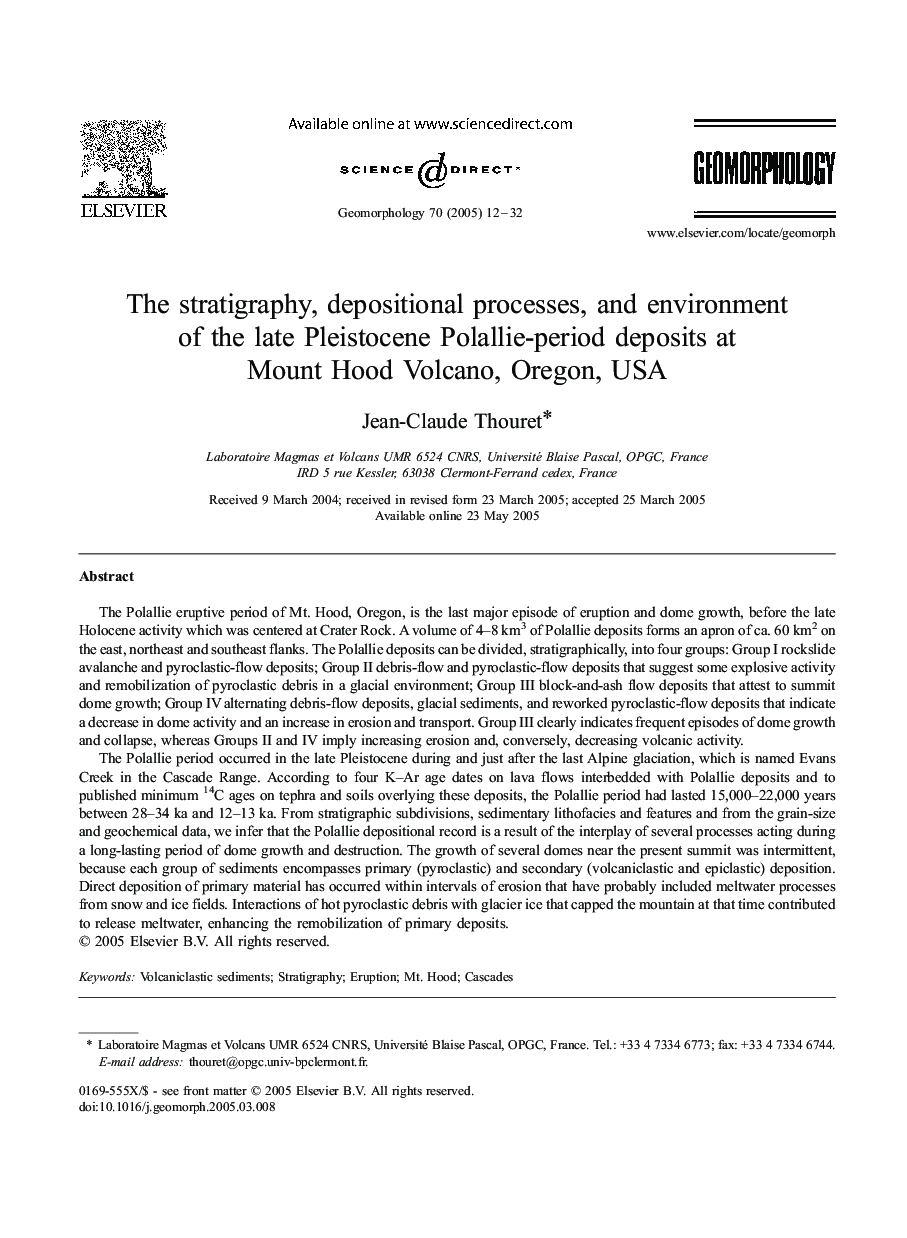| کد مقاله | کد نشریه | سال انتشار | مقاله انگلیسی | نسخه تمام متن |
|---|---|---|---|---|
| 9524848 | 1635610 | 2005 | 21 صفحه PDF | دانلود رایگان |
عنوان انگلیسی مقاله ISI
The stratigraphy, depositional processes, and environment of the late Pleistocene Polallie-period deposits at Mount Hood Volcano, Oregon, USA
دانلود مقاله + سفارش ترجمه
دانلود مقاله ISI انگلیسی
رایگان برای ایرانیان
کلمات کلیدی
موضوعات مرتبط
مهندسی و علوم پایه
علوم زمین و سیارات
فرآیندهای سطح زمین
پیش نمایش صفحه اول مقاله

چکیده انگلیسی
The Polallie period occurred in the late Pleistocene during and just after the last Alpine glaciation, which is named Evans Creek in the Cascade Range. According to four K-Ar age dates on lava flows interbedded with Polallie deposits and to published minimum 14C ages on tephra and soils overlying these deposits, the Polallie period had lasted 15,000-22,000 years between 28-34 ka and 12-13 ka. From stratigraphic subdivisions, sedimentary lithofacies and features and from the grain-size and geochemical data, we infer that the Polallie depositional record is a result of the interplay of several processes acting during a long-lasting period of dome growth and destruction. The growth of several domes near the present summit was intermittent, because each group of sediments encompasses primary (pyroclastic) and secondary (volcaniclastic and epiclastic) deposition. Direct deposition of primary material has occurred within intervals of erosion that have probably included meltwater processes from snow and ice fields. Interactions of hot pyroclastic debris with glacier ice that capped the mountain at that time contributed to release meltwater, enhancing the remobilization of primary deposits.
ناشر
Database: Elsevier - ScienceDirect (ساینس دایرکت)
Journal: Geomorphology - Volume 70, Issues 1â2, August 2005, Pages 12-32
Journal: Geomorphology - Volume 70, Issues 1â2, August 2005, Pages 12-32
نویسندگان
Jean-Claude Thouret,